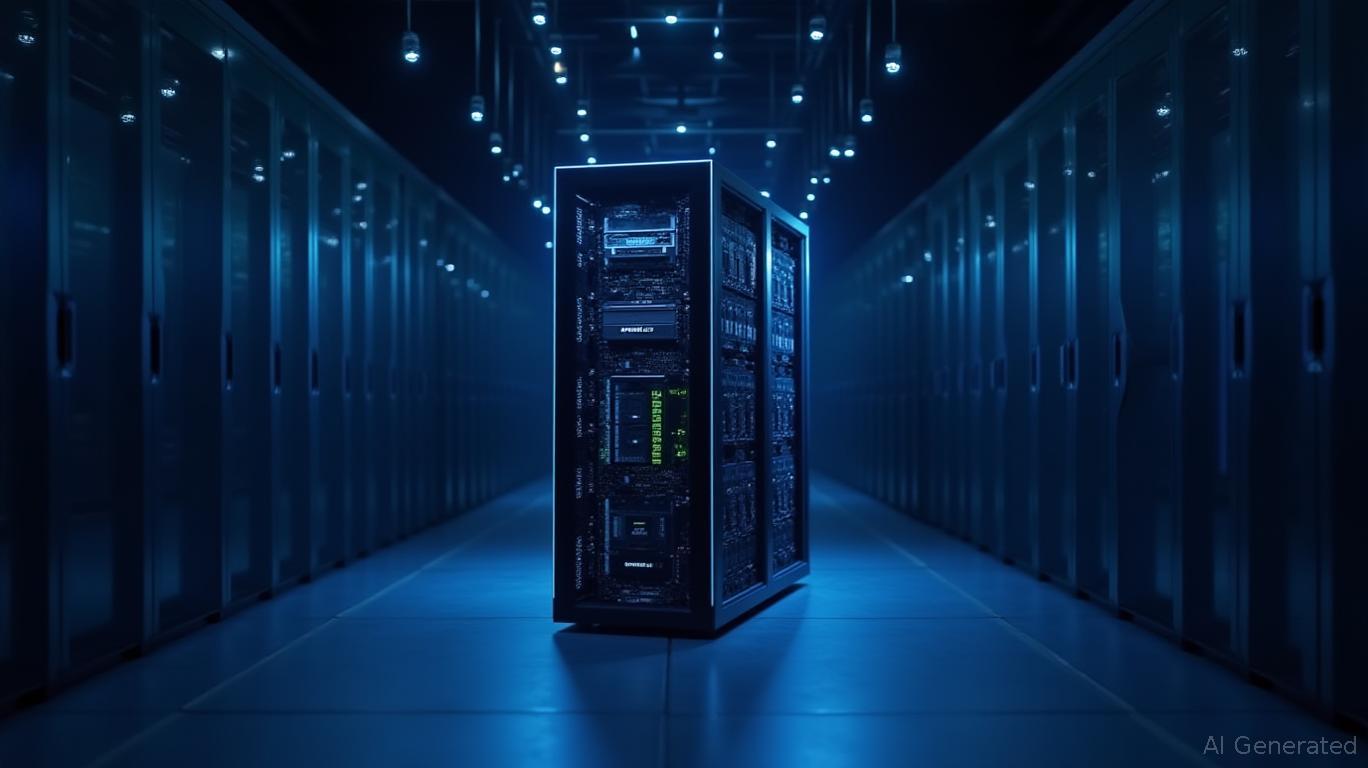Super Micro Computer: Pioneering the AI Infrastructure Revolution at Scale and the Edge
Julian CruzMonday, Jun 23, 2025 9:11 am ET
In an era where artificial intelligence (AI) is reshaping industries from healthcare to manufacturing, the demand for advanced computing infrastructure has surged.
---
### The Data Center Evolution: Liquid Cooling and Synergy
Super Micro's recent advancements in data center scaling are underpinned by its Direct Liquid Cooling (DLC-2) technology, a game-changer for high-density AI workloads. This system cools server components directly, enabling hyperscale data centers to manage up to 250kW per rack—a critical advantage as NVIDIA's next-gen Blackwell GPUs demand higher power and cooling efficiency.

The partnership with NVIDIA remains central to SMCI's strategy. Its 30+ solutions for the Blackwell architecture—including liquid-cooled systems for NVIDIA's HGX B200 and RTX PRO 6000 GPUs—have already secured deployments in Malaysia via the Asia-Pacific AI Computing Center (AICC). By pre-validating designs with NVIDIA's AI Factory framework, reduces customer implementation timelines from 18 months to just three, making hyperscale AI adoption feasible for enterprises.
The financials underscore this progress: SMCI reported 54% year-over-year revenue growth in Q2 2025, driven largely by AI server demand. However, margins have been squeezed by rising semiconductor costs, with gross margins dipping to 9.6% in Q3 2025.
NVDA, SMCI, DELL Closing Price
---
### Edge Computing: Powering Real-Time AI at the Periphery
While data centers anchor centralized AI processing, edge computing is the unsung hero of applications requiring ultra-low latency—think autonomous traffic systems or factory automation. Here, Super Micro's collaboration with Ericsson shines. Their joint 5G-Edge AI bundles combine Ericsson's connectivity with Super Micro's compact, fanless edge servers, enabling real-time data processing at the edge.
Products like the shoe-box-sized edge AI systems and 1U rackmount servers are already deployed in retail and manufacturing sectors. For instance, a factory using these systems can analyze production-line data locally, reducing reliance on distant cloud servers and minimizing downtime.
---
### Risks and Challenges: Margin Pressures and Regulatory Hurdles
Despite its momentum, SMCI faces significant headwinds. The SEC and DOJ investigations into past accounting claims loom over the company, potentially impacting its reputation and access to capital. Meanwhile, semiconductor costs—particularly for GPUs—have eroded margins, a trend that could worsen if AI demand plateaus.
The company's $1.9 billion debt and inventory levels also raise concerns, though its $2.5 billion cash reserves and recent $700 million convertible note issuance provide some buffer. Investors must monitor whether SMCI can stabilize margins as it scales production and transitions to NVIDIA's next-gen Blackwell Ultra GPUs.
---
### Investment Thesis: A High-Reward, High-Risk Play
For long-term investors, SMCI's long-term potential is undeniable. Its DLC-2 technology and partnerships with industry leaders like NVIDIA and Ericsson position it to dominate AI infrastructure, especially as enterprises prioritize sustainability and scalability. Analysts' 2,000% upside fair value estimates reflect this optimism, though they hinge on margin recovery and regulatory clarity.
However, the near-term risks are substantial. A slowdown in AI adoption or a semiconductor oversupply could destabilize SMCI's growth trajectory. Historically, a strategy of buying SMCI on earnings announcement days and holding for 20 days since 2020 delivered an average annual return of 69%, though with a maximum drawdown of -68%, underscoring its high-risk profile. This suggests that while SMCI's earnings-driven performance has been explosive, volatility remains a key consideration. Conservative investors may prefer to wait for margin stabilization, while aggressive investors might consider a small, speculative position in SMCI as part of a diversified tech portfolio.
---
### Conclusion: Betting on the Infrastructure of Tomorrow
Super Micro Computer is not just a hardware supplier—it's a strategic enabler of the AI revolution. Its innovations in data center cooling and edge computing address the core infrastructure challenges of the 2020s, from climate-conscious hyperscalers to factories needing real-time intelligence. While hurdles like margin volatility and regulatory risks remain, SMCI's first-mover advantage and ecosystem partnerships make it a critical player in an industry poised for exponential growth. For investors willing to endure short-term turbulence, SMCI could offer a rare chance to profit from the foundational layers of AI's future.
Final Note: Monitor SMCI's Q4 2025 earnings for updates on margin recovery and the progress of its Saudi green AI campus project.
Ask Aime: Can Super Micro Computer sustain its AI server growth?
Disclaimer: The news articles available on this platform are generated in whole or in part by artificial intelligence and may not have been reviewed or fact checked by human editors. While we make reasonable efforts to ensure the quality and accuracy of the content, we make no representations or warranties, express or implied, as to the truthfulness, reliability, completeness, or timeliness of any information provided. It is your sole responsibility to independently verify any facts, statements, or claims prior to acting upon them. Ainvest Fintech Inc expressly disclaims all liability for any loss, damage, or harm arising from the use of or reliance on AI-generated content, including but not limited to direct, indirect, incidental, or consequential damages.

Comments
No comments yet